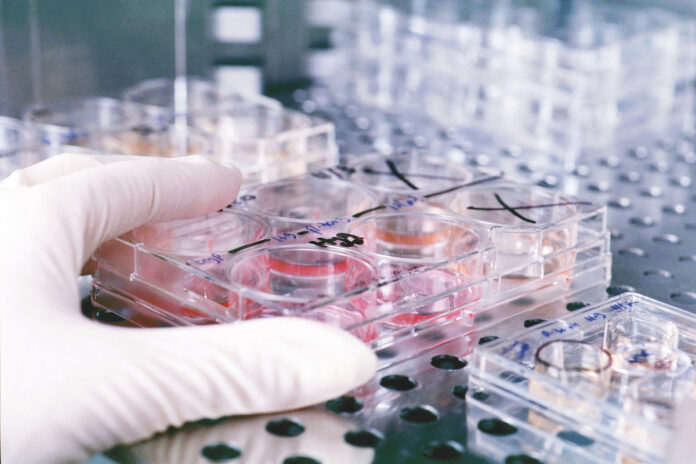
Salmonella sp. is one of the most common bacteria associated with foodborne illness in humans. Each year in the United States, foodborne salmonellosis causes around 1.35 million infections, 26,500 hospitalizations, and 420 deaths, according to CDC estimations.
Thainá L. Barros1*, Danielle Graham1, Aaron Ashcraft1, Makenly Coles1, Lesleigh Beer1, Guillermo Tellez-Isaias1, Brian Wooming2, Billy M. Hargis1
1University of Arkansas Division of Agriculture, Fayetteville, AR 72701; 2Cargill Turkeys LLC, Springdale AR 72764; *DVM, MS, Ph.D. student in Poultry
Paratyphoid Salmonella can be introduced to commercial facilities by a variety of sources. Breeders can vertically transmit Salmonella sp. to the offspring; rodents, darkling beetles, and insects can bring and disseminate Salmonella sp. in poultry houses; contaminated feed and water can also be a source of infection. Fecal-oral transmission of Salmonella is commonly reported as the main route of transmission of Salmonella; however, there is evidence that a fecal-respiratory route should be considered. The airborne transmission of Salmonella is possible not only in the farm but also before slaughter at the processing plant, during holding time.
Understanding the potential mode of transmission of Salmonella is crucial, to evaluate interventions. Live production and processing plants need to work together to find strategies to decrease and prevent foodborne illness by working on “farm-to-fork” interventions.
 Salmonella Reading is a serotype that is uncommonly associated with human illness, but during 2018–2019, the CDC, the U.S. Department of Agriculture (USDA), and the Food and Drug Administration (FDA) investigated a multistate outbreak of 356 S. Reading infections from 42 states associated with turkey products. The outbreak strain was isolated from raw ground turkey meat and live turkeys. During this time, four recalls of turkey meat occurred, suggesting that S. Reading was an emerging problem for the turkey industry.
Salmonella Reading is a serotype that is uncommonly associated with human illness, but during 2018–2019, the CDC, the U.S. Department of Agriculture (USDA), and the Food and Drug Administration (FDA) investigated a multistate outbreak of 356 S. Reading infections from 42 states associated with turkey products. The outbreak strain was isolated from raw ground turkey meat and live turkeys. During this time, four recalls of turkey meat occurred, suggesting that S. Reading was an emerging problem for the turkey industry.
Recently, our group developed a Salmonella challenge model to infect older turkeys. This model was used to evaluate various tissues to attempt to determine the source(s) of Salmonella contamination during processing. In this study, one hundred twenty-eight-week-old commercial turkey hens were transported from commercial production to research facilities. After arrival, turkeys were comingled on fresh pine shavings and a combination of antibiotics was orally administered to reduce or eliminate any pre-existing Salmonellae infection. Additionally, antibiotic administration was used to disrupt the established microbiota and increase the chance of successful infection after inoculation of Salmonella.
Turkeys were challenged with 108 colony forming units (cfu) S. Reading by oral gavage on days 4 and 7 post-placement. Subsets were subjected to simulated commercial processing on days 14 (n=40), 21 (n=40) and 28 (n=32) post- placement (corresponding to 10, 11, and 12 weeks of age). Stifle joint, skin, trachea, crop, lung, liver/spleen, and ceca were aseptically sampled and cultured for Salmonella sp. recovery and serotyping. At 14 days post-inoculation (d.p.i.), recovery of S. Reading was 80% in the skin, 75% in the crop, 67.5% in the liver/spleen, 60% in the lungs, and 57.5% in the ceca (P<0.01).
Interestingly, the lowest recovery of S. Reading was observed from the trachea (40%). S. Reading could not be recovered from stifle joint 14, 21 nor 28 d.p.i. At 21 d.p.i., the highest rate of positive samples to S. Reading were observed in the ceca (87.5%), crop (67.5%), and lung (52.5%). By 28 d.p.i., S. Reading was only recovered from the ceca (75%); crop (43.8%); lungs (34.4%); and liver/spleen (21.9%). The high incidence of S. Reading in the crop and ceca at 28 d.p.i. suggested that S. Reading can persist in infecting the birds by oral-fecal infection. Also, the study indicates that the pulmonary tissue of turkeys may play a much larger role in Salmonella contamination during processing than was previously known. These results reinforce the importance of monitoring Salmonella sp. to reduce foodborne pathogens such as Salmonella, targeting live production, processing plants, and consumer education about food safety.
References are available on request
From the Proceedings of the Midwest Poultry Federation Convention 2021

















